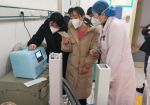The Impact of Lifestyle and Environmental Factors on Lung Cancer Risk

Defining Lung Cancer: Types and Stages
Lung cancer, a leading cause of cancer-related deaths worldwide, is a disease characterized by uncontrolled cell growth in lung tissue. It is broadly classified into two main types: non-small cell lung cancer (NSCLC) and small cell lung cancer (SCLC). NSCLC accounts for approximately 85% of cases and includes subtypes such as adenocarcinoma, squamous cell carcinoma, and large cell carcinoma. SCLC, known for its rapid growth and spread, makes up the remaining 15% of cases.
The staging of lung cancer is critical for determining the appropriate treatment plan and prognosis. Stages range from I to IV, with Stage I indicating a localized tumor and Stage IV representing advanced disease with metastasis to distant organs. Early detection of lung cancer can significantly improve survival rates, yet the symptoms often go unnoticed until the disease has progressed. Misdiagnosis is a concern, as symptoms can mimic other respiratory conditions.
Treatment options vary based on the type and stage of lung cancer and may include surgery, radiation therapy, chemotherapy, targeted therapy, or a combination of these. The prognosis for lung cancer patients has improved with advancements in medical treatments and technologies, but the overall survival rate remains low, highlighting the importance of early detection and prevention strategies.
Genetic Predisposition and Family History
While environmental factors and lifestyle choices are significant, genetic predisposition plays a crucial role in the risk of developing lung cancer. A family history of lung cancer can indicate a higher likelihood of the disease due to inherited genetic mutations. These mutations can compromise the DNA repair mechanisms or affect the cell cycle, leading to increased susceptibility to cancer.
- Inherited Mutations: Certain genes, when mutated, can increase the risk of lung cancer. These include genes responsible for DNA repair and cell growth regulation.
- Family History: Individuals with a first-degree relative diagnosed with lung cancer have a higher risk, suggesting a heritable component to the disease.
It is important to note that having a genetic predisposition does not guarantee the development of lung cancer, but it does necessitate increased vigilance and potentially more frequent screenings. Genetic counseling and testing can be valuable for those with a significant family history, providing insight into personal risk and guiding preventive strategies.
The Role of Mutagens and Carcinogens
Mutagens and carcinogens play a significant role in the development of lung cancer. These agents cause changes to the DNA of cells, which can lead to uncontrolled growth and tumor formation. The list of known carcinogens is extensive, but some of the most common include:
- Tobacco smoke, which contains over 7,000 chemicals, many of which are known to be carcinogenic.
- Radon gas, a naturally occurring radioactive substance that can accumulate in homes and buildings.
- Asbestos, a group of minerals used in construction and manufacturing that can cause mesothelioma, a deadly cancer with limited survival rates.
- Air pollution, which often contains particulate matter and chemicals that can be harmful when inhaled.
Exposure to these substances can occur in various settings, from occupational environments to daily life. It’s important to recognize that while some individuals may have a higher genetic susceptibility to the effects of mutagens and carcinogens, no one is immune. Preventative measures, such as avoiding known carcinogens, improving air quality, and adhering to safety protocols in the workplace, can significantly reduce the risk of developing lung cancer.
Lifestyle Choices and Their Impact on Lung Health
Smoking: The Primary Risk Factor for Lung Cancer
Smoking is the most significant risk factor for developing lung cancer, responsible for approximately 85% of all cases. The link between smoking and lung cancer is well-established, with the risk increasing with both the duration and intensity of smoking.
- Cigarettes: The inhalation of tobacco smoke delivers carcinogenic substances directly to lung tissues, initiating changes that can lead to cancer.
- Other Tobacco Products: Cigars, pipes, and other forms of tobacco also contribute to lung cancer risk, albeit to a lesser extent than cigarettes.
- Smokeless Tobacco: While not directly linked to lung cancer, the use of products like snuff and chewing tobacco is associated with other forms of cancer.
It’s not just smokers who are at risk; secondhand smoke exposure also increases the likelihood of developing lung cancer. Non-smokers living with a smoker have a 20-30% greater risk of developing lung cancer compared to those not exposed to secondhand smoke. This underscores the importance of smoke-free environments for protecting public health.
Diet and Nutrition: Can What We Eat Affect Our Lungs?
The connection between diet and lung health is an area of growing interest among researchers. While the direct impact of nutrition on lung cancer risk is still being explored, certain dietary patterns may influence overall lung function and susceptibility to disease.
- Antioxidant-rich foods: Diets high in fruits and vegetables, which are sources of antioxidants, have been associated with better lung function and may protect against oxidative damage caused by pollutants and smoking.
- Anti-inflammatory properties: Foods with anti-inflammatory properties, such as omega-3 fatty acids found in fish, may reduce inflammation in the lungs, potentially lowering the risk of chronic respiratory diseases.
- Micronutrients: Adequate levels of certain vitamins and minerals, like vitamin C, vitamin E, and selenium, are important for maintaining lung health and supporting the immune system.
It’s important to note that while a healthy diet can contribute to overall well-being, it is not a substitute for other risk-reducing behaviors, such as avoiding tobacco smoke and mitigating exposure to environmental toxins. Nevertheless, adopting a balanced diet could be a valuable component of a comprehensive strategy to maintain lung health and reduce the risk of lung cancer.
Physical Activity and Lung Function: Is There a Connection?
The relationship between physical activity and lung function has been a subject of research for many years. Regular exercise is known to improve cardiovascular health, but its effects on the lungs are equally significant.
- Improved Respiratory Efficiency: Engaging in regular physical activity enhances the efficiency of the respiratory system. This is particularly beneficial for maintaining healthy lung function over time.
- Enhanced Lung Capacity: Exercise can lead to increased lung capacity, allowing for better oxygen exchange and improved endurance.
- Reduced Risk of Lung Diseases: Physical activity may also reduce the risk of developing chronic lung diseases, including chronic obstructive pulmonary disease (COPD) and lung cancer.
While the direct impact of exercise on reducing lung cancer risk is still being studied, the indirect effects, such as weight management and improved immune function, contribute to overall lung health. For those looking to support lung health initiatives, this website offers valuable information and ways to get involved.
Environmental Exposures and Lung Cancer Risk
Air Pollution: Outdoor and Indoor Quality Concerns
The quality of the air we breathe, both outdoors and indoors, has a significant impact on lung health. Outdoor air pollution, stemming from industrial emissions, vehicle exhaust, and other sources, contains a mix of harmful substances. These include particulate matter, nitrogen oxides, and volatile organic compounds, all of which can contribute to the development of lung cancer.
Indoor air quality is equally important, as individuals spend a considerable amount of time inside their homes, workplaces, and other indoor environments. Common indoor pollutants include tobacco smoke, radon gas, household chemicals, and fine particulate matter from cooking and heating. Prolonged exposure to these pollutants can damage lung tissue and lead to cancerous changes.
To address these concerns, several key steps can be taken:
- Regularly monitoring and improving ventilation systems to reduce indoor pollutant levels.
- Advocating for stricter regulations and cleaner technologies to minimize outdoor air pollution.
- Encouraging the use of air purifiers and other devices to maintain indoor air quality.
- Promoting awareness about the health risks associated with poor air quality and the importance of environmental protection.
Occupational Hazards: Asbestos, Radon, and Other Toxins
Patients with mesothelioma and lung cancer are entitled to a range of legal rights and resources that aim to protect their interests and ensure they receive appropriate care. The Lung Cancer Group aims to assist those with asbestos-related diseases in their legal matters. These rights are grounded in legislation, ethical principles, and standards of medical practice. This website provides resources and assistance with lung cancer and legal advice.
Radon gas, another potent carcinogen, is a natural but harmful byproduct of uranium decay. It can accumulate in buildings, particularly basements and other low-lying areas, posing a risk to construction workers and miners. Regular exposure to high levels of radon has been linked to an increased incidence of lung cancer.
Other occupational toxins include:
- Arsenic, found in some agricultural and industrial processes
- Chromium, used in metal plating and steel manufacturing
- Nickel, utilized in metal refining and battery production
- Diesel exhaust, encountered by truck drivers and machinery operators
Employers and employees must be aware of these risks and implement safety measures to minimize exposure. Protective equipment, proper ventilation, and regular health screenings are essential components of an effective workplace safety program.
Secondhand Smoke Exposure: Understanding the Risks
Exposure to secondhand smoke, also known as passive smoking, is a significant but preventable cause of lung cancer in non-smokers. It occurs when individuals inhale the smoke exhaled by smokers or the smoke from burning tobacco products. This type of exposure is especially concerning in enclosed spaces where ventilation is poor.
- Health Risks: Secondhand smoke contains over 7,000 chemicals, many of which are toxic and at least 70 that are known carcinogens. Regular exposure can lead to the same health problems that smokers face, including lung cancer, respiratory infections, and heart disease.
- Vulnerable Populations: Children and non-smoking adults living with smokers are at a higher risk. The developing lungs of children are particularly susceptible to the harmful effects of secondhand smoke, which can result in severe asthma attacks and even sudden infant death syndrome (SIDS).
- Regulations and Public Awareness: Many countries have implemented laws to ban smoking in public places, which has significantly reduced secondhand smoke exposure. Public awareness campaigns continue to highlight the dangers and encourage smoke-free environments at home and in public spaces.
For those who have been exposed to secondhand smoke, especially in high-risk environments such as military settings, the consequences can be severe. Army veterans and families, for instance, may face heightened risks due to asbestos exposure, which can lead to diseases like mesothelioma. In response, the Veterans Affairs (VA) provides necessary medical care and compensation to those affected.
Preventive Measures and Risk Reduction Strategies
Smoking Cessation Programs and Their Effectiveness
Smoking cessation programs are a cornerstone in the fight against lung cancer. These programs are designed to provide smokers with the resources and support necessary to quit smoking, thereby significantly reducing their risk of developing lung cancer. The effectiveness of these programs is often measured by their ability to help individuals remain smoke-free over the long term.
Several key components contribute to the success of smoking cessation programs:
- Personalized Support: Tailored plans that address individual needs and smoking habits.
- Behavioral Therapy: Techniques to manage cravings and develop healthier habits.
- Nicotine Replacement Therapy (NRT): Products that help to reduce withdrawal symptoms and nicotine addiction.
- Medications: Prescription drugs that can help to curb the desire to smoke.
- Follow-up and Accountability: Regular check-ins to track progress and provide ongoing support.
Studies have shown that participants in smoking cessation programs are more likely to quit smoking compared to those who attempt to quit on their own. The combination of professional guidance, peer support, and medical interventions increases the likelihood of a successful quit attempt. However, the effectiveness can vary widely among individuals, and long-term cessation requires a sustained commitment and often multiple attempts.
Dietary Interventions and Antioxidant Consumption
The relationship between diet and lung cancer risk has been a subject of considerable research. Studies suggest that a diet rich in fruits, vegetables, and antioxidants can play a role in reducing the risk of developing lung cancer. Antioxidants, such as vitamins A, C, and E, as well as certain phytochemicals, help neutralize harmful free radicals in the body, potentially preventing the damage to cells that can lead to cancer.
Key dietary interventions include:
- Increasing the intake of whole foods that are high in antioxidants.
- Incorporating a variety of colorful fruits and vegetables to ensure a wide range of nutrients.
- Limiting the consumption of processed meats and foods high in saturated fats, which have been linked to an increased risk of cancer.
While dietary changes alone cannot guarantee prevention, they can be an important part of a comprehensive risk reduction strategy. Alongside other lifestyle modifications and regular screenings, dietary interventions can contribute to overall lung health and potentially lower the incidence of lung cancer.
Screening and Early Detection: Tools and Techniques
Early detection of lung cancer significantly increases the chances of successful treatment and survival. Screening tools and techniques play a vital role in identifying the disease at an early stage, often before symptoms appear. The primary method for lung cancer screening is low-dose computed tomography (LDCT), which is more effective at detecting early-stage lung cancers than traditional chest X-rays.
Key steps in the screening process include:
- Assessing individual risk factors such as age, smoking history, and family history of lung cancer.
- Determining the appropriate frequency of screening based on risk assessment.
- Following up on any abnormalities found during screening with further testing, such as biopsy or PET scans.
It is essential for healthcare providers to communicate the benefits and risks of lung cancer screening to patients. This includes discussing the potential for false positives, overdiagnosis, and the importance of adherence to screening schedules for those at high risk. Collaboration between patients and healthcare professionals is crucial to ensure that screening leads to early detection and timely intervention.
The Broader Context: Socioeconomic Factors and Access to Care
Healthcare Disparities and Lung Cancer Incidence
The incidence of lung cancer is significantly influenced by disparities in healthcare access and quality. Individuals from underprivileged backgrounds often face barriers to healthcare services, which can lead to delayed diagnoses and treatment. This delay can result in a higher likelihood of lung cancer being detected at an advanced stage, when it is less treatable.
Key factors contributing to healthcare disparities include:
- Limited access to preventive care and screenings, which are crucial for early detection of lung cancer.
- Inadequate health insurance coverage, which can deter individuals from seeking medical help or participating in routine check-ups.
- A shortage of healthcare facilities and providers in certain regions, particularly in rural or economically disadvantaged areas.
Efforts to address these disparities are essential in reducing the incidence and mortality rates of lung cancer. Strategies such as expanding health insurance coverage, increasing funding for healthcare in underserved areas, and implementing community-based screening programs can help bridge the gap in care.
The Influence of Socioeconomic Status on Lifestyle Choices
Socioeconomic status (SES) plays a significant role in shaping an individual’s lifestyle choices, which in turn can affect their risk of developing lung cancer. People from lower SES backgrounds often face barriers to healthy living due to limited access to resources such as nutritious food, safe environments for physical activity, and quality healthcare.
- Access to Nutritious Food: Those with higher SES can more easily afford a balanced diet rich in fruits and vegetables, which are known to contain cancer-fighting antioxidants. In contrast, lower SES often correlates with a higher consumption of processed and fast foods, which may increase cancer risk.
- Physical Activity: Individuals with higher SES typically have greater access to safe recreational spaces and can more readily engage in regular physical activity, a factor that has been linked to improved lung function and reduced cancer risk.
- Healthcare Access: Preventive healthcare services, including lung cancer screenings and smoking cessation programs, are more accessible to those with higher SES. Early detection and intervention can significantly reduce the risk of developing lung cancer.
These disparities highlight the importance of addressing socioeconomic factors in public health strategies to reduce lung cancer risk and promote equitable health outcomes for all individuals.
Community Initiatives and Public Health Policies
Public health policies and community initiatives play a crucial role in mitigating lung cancer risk. By implementing smoking bans in public areas and workplaces, communities can significantly reduce the exposure to harmful tobacco smoke. Educational campaigns that promote awareness about the dangers of smoking and the importance of lung health are also vital.
- Smoking bans in public areas
- Workplace no-smoking policies
- Educational campaigns on smoking risks
Furthermore, public health policies that regulate air quality standards help to minimize the impact of outdoor and indoor air pollution. Subsidies or incentives for cleaner energy sources can also contribute to improved air quality. Community programs that encourage physical activity, such as the development of parks and recreational facilities, support overall lung health.
- Air quality regulation and enforcement
- Incentives for cleaner energy use
- Development of parks and recreational facilities
Access to healthcare is another critical aspect. Policies that ensure equitable access to lung cancer screening and treatment services are essential for early detection and effective management of the disease. Community health centers and mobile screening units can bridge the gap in underserved areas.
- Equitable access to lung cancer screening
- Mobile screening units for underserved communities
- Community health centers providing treatment services
In conclusion, a multifaceted approach that combines community action with supportive public health policies can create an environment that fosters lung health and reduces the burden of lung cancer.
















